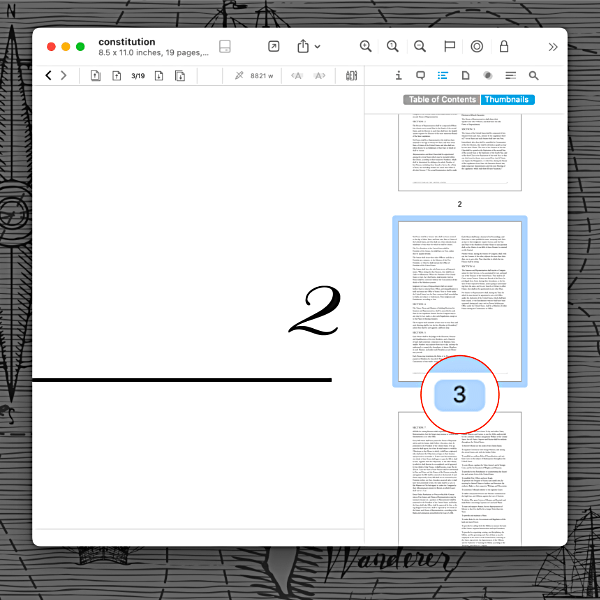Understanding PDF Page Numbering

In DEVONthink and DEVONthink To Go you can copy page links in a PDF. These item links allow you to jump to a specific page in the PDF. But sometimes the number in the item link is wrong… isn’t it? Or you may manually add a page parameter but it isn’t jumping to the correct page!? Here’s how PDF pages and the item link parameter work.
In a PDF, or technically any other format with distinct page breaks, e.g., Word, InDesign, etc., there can be two kinds of page numbers:
- Page numbers are the physical page in the document, e.g., page 12 of 48. Every document has page numbers.
- Page folios1 are the numbers placed in the text of a document when it's being composed. This is the page number you usually refer to, e.g., “I stopped reading on page 122.” That’s actually folio 122. Page folios are optional but common, especially in long form materials like books, catalogs, etc.
These numbers are very often not the same value. For example, the front and inside covers of a book have no page folios but must have a page number since they’re in the document. So folio 1 in the text may be page number 3. In some cases, publishers will start folios at a higher number, accounting for the preceding pages that have no folio. Our application manuals are numbered this way, so the page numbers and folios do match.
What this means is if you select a PDF page or its thumbnail and use Edit > Copy Page Link, or copy the item link in the iOS Share menu, the page parameter points to the page number, not the folio. In practice, this shouldn’t matter to you much, unless you are manually editing or inspecting the item links.
If you are manually adding a page parameter to an item link, bear in mind, the page numbers are zero-based. This means adding ?page=12 to the end of an item link points to page 13 in the document. From 0 to 12 it’s thirteen pages, not twelve.
We hope this helps clarify the page item link parameter. Happy page linking!
1) We know that “page number” is the more commonly used term for also the numbers printed on pages. We use the alternative, technical term “folio” intentionally here to make the difference clearer.
Note: This article deals with an older app generation. Interface elements, menu paths, and procedures could differ.
